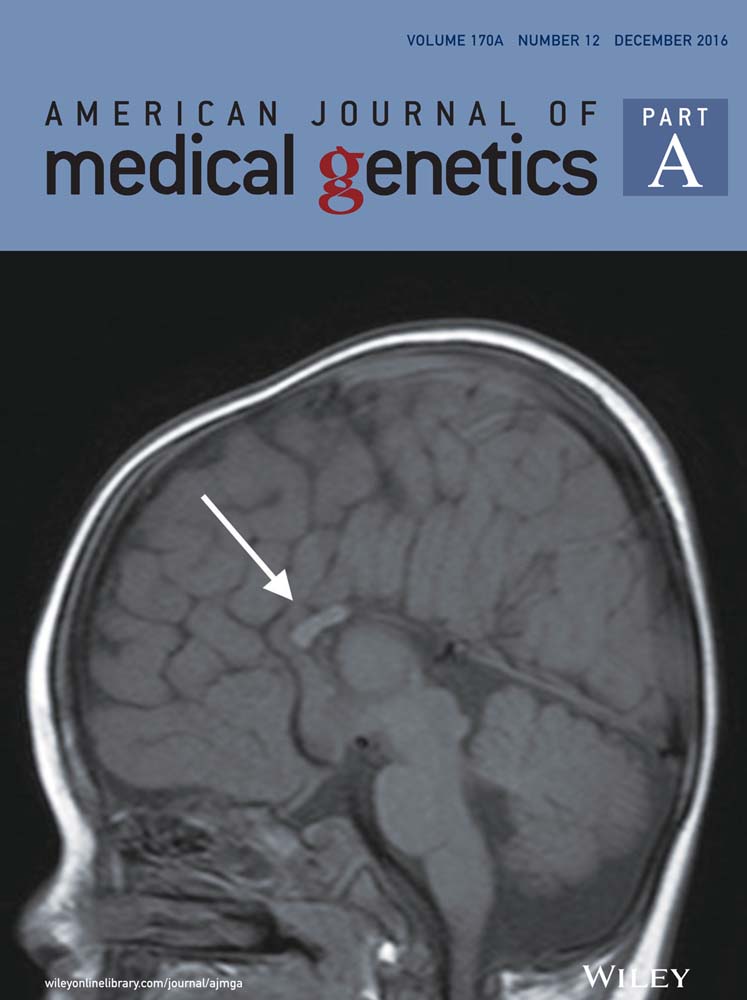In this issue
PRENATALLY DETECTED LIMB DEFECTS LINKED TO MOTHERS' THROMBOPHILIA
A study by Ordal et al (p. 3083, DOI: 10.1002/ajmg.a.37890) shows increased prevalence of inherited thrombophilia, compared to the general population, in women with a pregnancy affected by congenital limb deficiency defect (LDD).
LDDs can result from acquired causes, single-gene disorders and chromosome abnormalities, or no obvious cause. Meanwhile, some studies have found an association between maternal thrombophilia and congenital LDDs.
The researchers investigated this association through a review of all prenatally identified LDDs at a major tertiary care center in Toronto over a 12-year period. Of 78 cases, 34 were excluded for various reasons, so the researchers reviewed 44 mothers' charts in detail. Fourteen mothers terminated pregnancies, 26 had live births, and three were lost to follow-up.
Of the 29 mothers who were deemed eligible for thrombosis screening, 10 were excluded. Of the 19 who had screening, 19% had thrombophilia. This prevalence is higher than what is found in the general population. Most LDDs were identified during the routine 18- to 20-week anatomy ultrasound, but some were discovered as early as 13 weeks' gestation.
The researchers suggest screening for maternal thrombophilia in all occurrences of pre- or postnatally identified LDDs. Screening could provide an explanation for the LDD and provide valuable information for the mother about her own risk of thrombosis, especially in the context of high-risk situations such as surgery, delivery, or trauma, they write.
GENETICS EXAM, TESTING GIVE HIGH DIAGNOSTIC YIELD FOR CONGENITAL HEART DEFECTS
A combined strategy encompassing clinical evaluation and genetic testing that did not include exome sequencing of infants with critical congenital heart defects (CHDs) resulted in genetic diagnoses for 25%, write Ahrens-Nicklas et al (p. 3090, DOI: 10.1002/ajmg.a.37891) in this issue.
CHDs are varied in nature and severity, and about 25% of patients with CHDs require intervention before age 1. Given the heterogeneous etiology of CHDs, the researchers conducted a retrospective chart review of 364 infants with CHDs who were admitted to the cardiac intensive care unit and got a clinical genetics evaluation to clarify whether the evaluation increased diagnostic yield in certain subpopulations.
Among these infants, 9% were diagnosed prenatally, and 16% were diagnosed postnatally. Cardiac lesion subtype greatly influenced the diagnostic yield. Dysmorphic features found in clinical exams were associated with a sevenfold increased likelihood of reaching a diagnosis.
Directed by clinical skill, diagnostic rates varied by testing modality. Diagnostic yield was 23% for karyotype, 17% for targeted gene sequencing, 12% for fluorescent in situ hybridization or multiplex-dependent ligation probe analysis, and 9% for genome-wide microarray. These yields would be much lower with universal rather than clinically directed genetic testing, say the researchers.
SIMILAR BUT DISTINCT DEVELOPMENTAL PHENOTYPES CAUSED BY MUTATIONS IN TWO GENES
EP300 mutations can cause a phenotype that greatly resembles that of Rubinstein-Taybi syndrome (RSTS) due to CREBBP variations, Fergelot et al write in this issue (p. 3067, DOI: 10.1002/ajmg.a.37940).
RSTS is a developmental disorder characterized by typical facial and distal limb abnormalities, intellectual disability, and a vast number of other features. Two genes have previously been shown to cause these features. CREBBP causes 60% of RSTS cases, and EP300 causes 8% to 10% of these cases.

The researchers describe the phenotype and genotype of 52 patients carrying EP300 mutations and intragenic deletions and compared these data to 308 individuals with CREBBP mutations.
Although the phenotype associated with EP300 mutations is similar to that caused by CREBBP variations, EP300-associated facial characteristics are less marked, with the exception of the low-hanging columella. It is as frequent in patients with EP300 mutations as in those with CREBBP variations. Limb defects in patients with EP300 mutations are also less marked in general.
All levels of cognitive problems were observed among patients with each mutation, but generally individuals with EP300 variation had higher levels of cognitive function. The researchers found no correlation between either the nature or the site of EP300 mutations and the phenotype.
Being pregnant with a child with an EP300mutation is at present the highest known risk factor for developing preeclampsia, the researchers note, and they urge more research into the relationship between the two.




